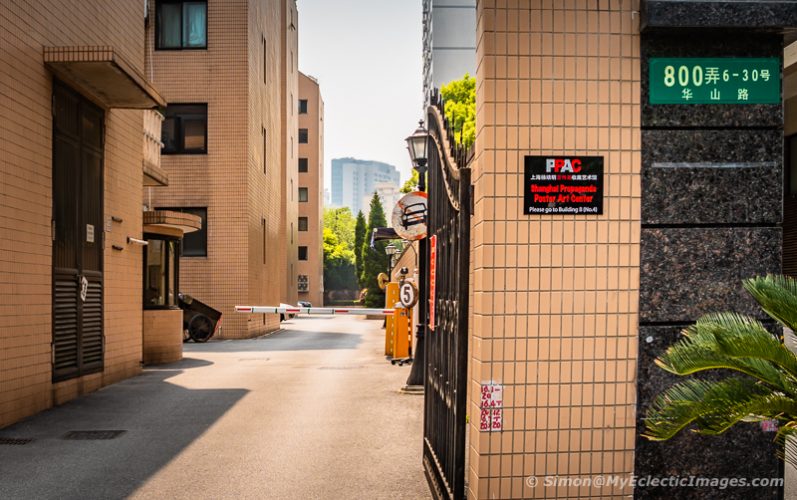Discover How One Man’s Determination Preserved History.
Shanghai, like the rest of China, is abundant with awe-inspiring treasures. Some are well-known and in plain view, while others are easy to pass by. One such treasure is the Propaganda Poster Art Center. Housed in an unassuming apartment building in Shanghai’s former French Concession, the museum/art gallery occupies three basement rooms. Two of the rooms house a rare collection of 6,000 Chinese propaganda posters tracing China’s tumultuous history between 1949 and 1979.
Three Decades of Propaganda Poster Art in Two Rooms
In the first two rooms of the Propaganda Poster Art Center, Simon and I followed the progression beginning with the civil war victory of the communists over the nationalists, giving them control of all of China. Mao Zedong’s (previously spelled “Tse-Tung”) repressive economic policies and the cruel ravages of the Cultural Revolution resulted in famine, upheaval, and bloodshed that took millions of lives.

Part of the Propaganda Poster Art Center in Shanghai (photograph taken with permission – ©simon@myeclecticimages.com)
During these dark decades, the propaganda posters depicted healthy-looking citizens working for the good of the country and warm relations between China and the Soviet Union. We Americans were presented as unruly, lustful cowboys and warmongers. And before the internet and social media, this was all the people had to shape their world view.
One Man’s Mission
As we prepared to leave the Propaganda Poster Art Center, we were offered the opportunity to meet the museum’s director and founder Yang Pei Ming, whose story is as fascinating as the propaganda posters themselves.
For the past two decades, Mr. Yang has been collecting communist-era propaganda posters in the firm belief that the historical value of this art must be preserved. During China’s 30 years of isolation, the government used this propaganda to manufacture an alternate reality in order to control the thinking and actions of the population.
Mr. Yang’s pre-retirement career was in travel. No doubt this proves useful since the majority of visitors to the Propaganda Poster Art Center are tourists. Perhaps, as time goes by, Mr. Yang’s priceless contribution to China will receive more recognition from its population.
Our conversation with Mr. Yang was brief but pleasant. He was friendly, but left no doubt that he took his work as a preserver of China’s history seriously. As a parting gift, he gave us a packet of postcards. Since no photography is permitted in the museum, Simon photographed them in order to give you a glimpse of what will be in store for you when you visit the museum yourself.
Our Take-Away from the Propaganda Poster Art Center
Our experience brought us face-to-face with the realization of how valuable pieces of history can be lost. Had it not been for Mr. Yang’s dedication in collecting and displaying three decades of propaganda posters, the world would have no idea of how it, as well as events within China, was presented to the Chinese people.
Many of the posters’ producers were artists whose names do not appear on their art. After all, the work they were commissioned to create was about the country and not the individual. Just try getting away with that kind of thing here!
Walking among the posters in the first two rooms of the museum felt like being in another time in history. But the gift shop, located in the third room, brought us back to reality. It sold copies of the posters, the famous little Red Books containing quotations from Mao, buttons bearing a picture of Mao’s face, post cards, and other souvenirs. I usually find these shops an unavoidable annoyance I must endure in order to exit, but not this one. It represented an opportunity to help preserve history.
If You Go
Shanghai Propaganda Poster Art Center
Room B-OC
President Apartment
868, Huashan Road
Shanghai
+86 (0)21 6211 1845
http://www.shanghaipropagandaart.com
Hours
10:00am to 5:00pm
Admission
¥25 (less than $4 at current exchange rates)
Accessibility
There is an elevator from the lobby of the building to the basement, but the only entrance we saw had several stairs leading to the door.









